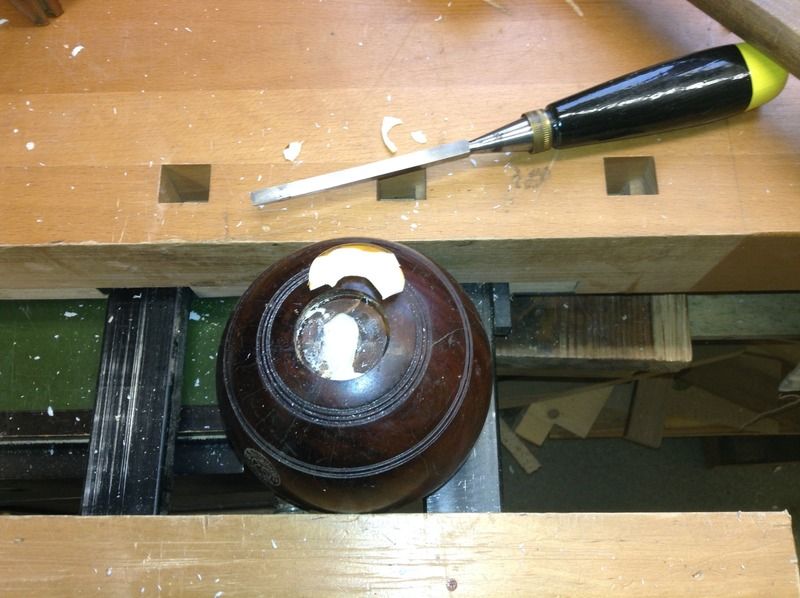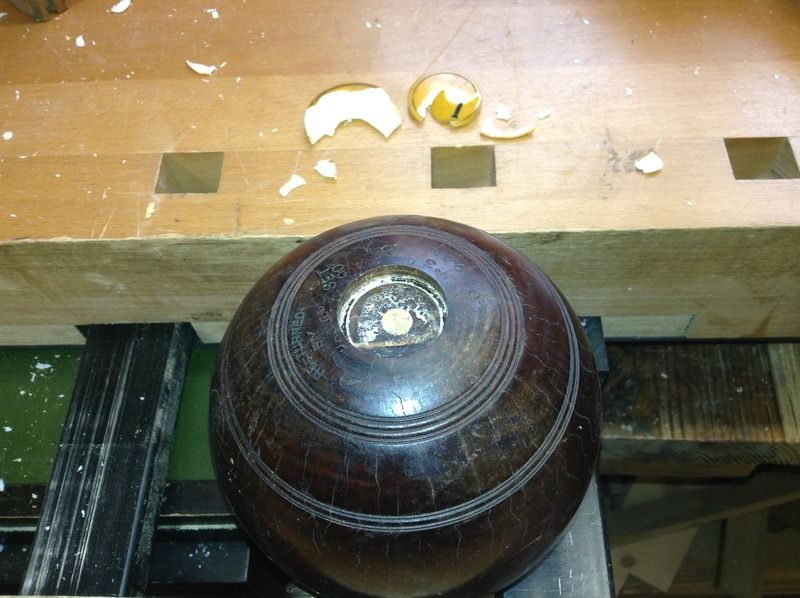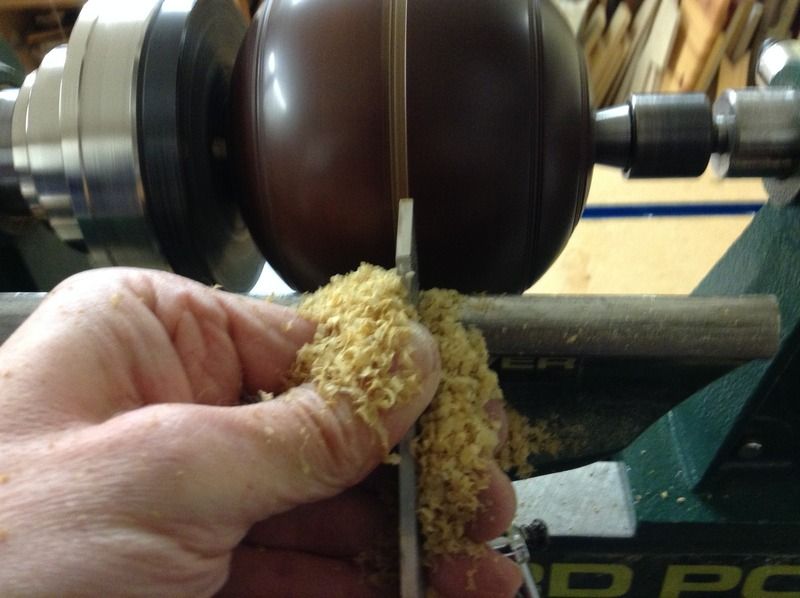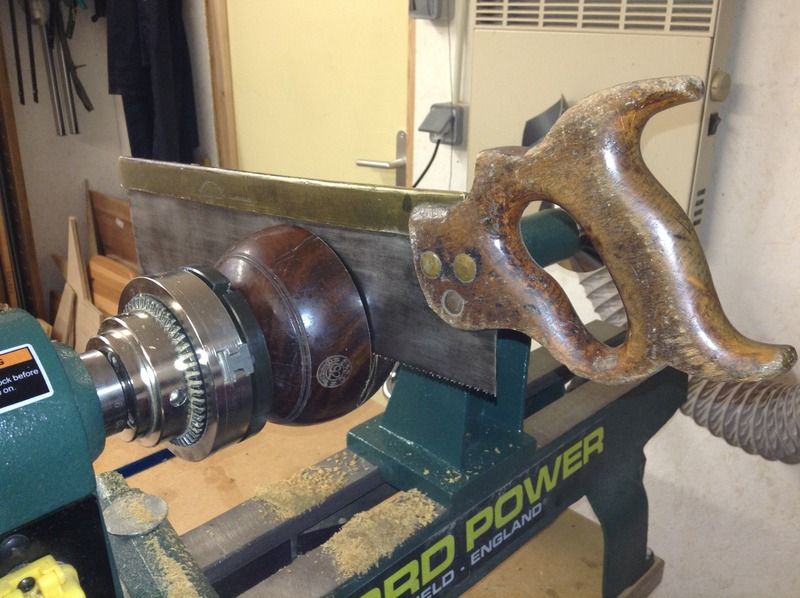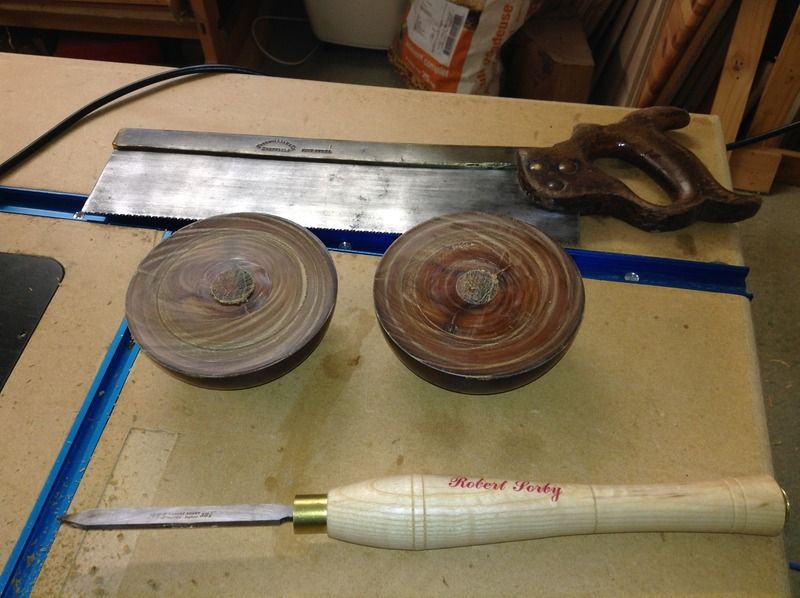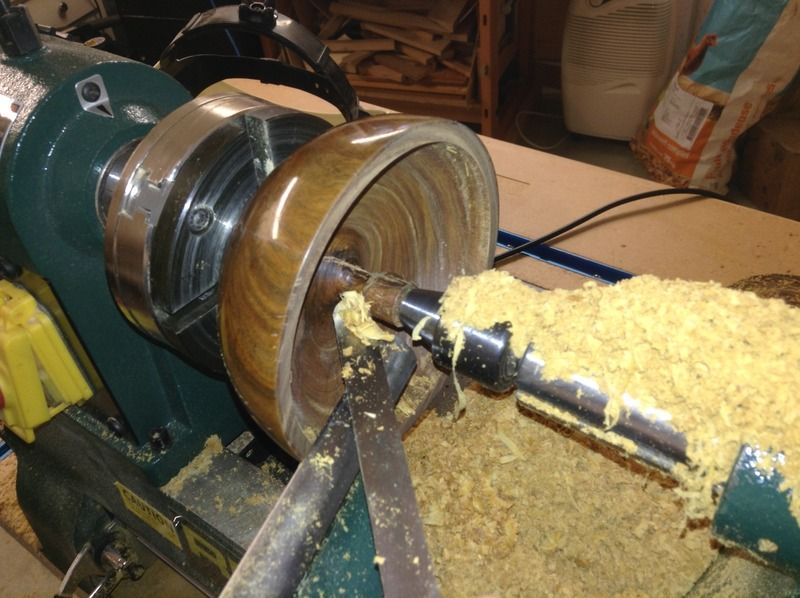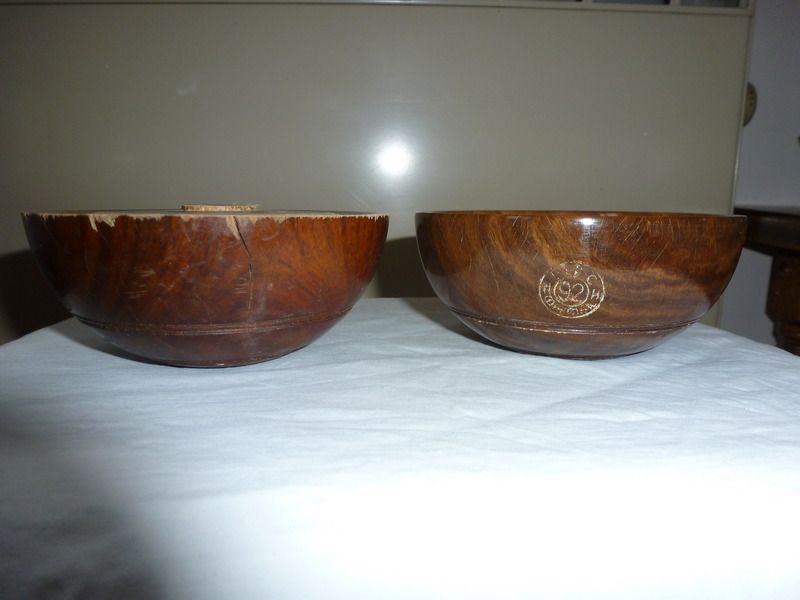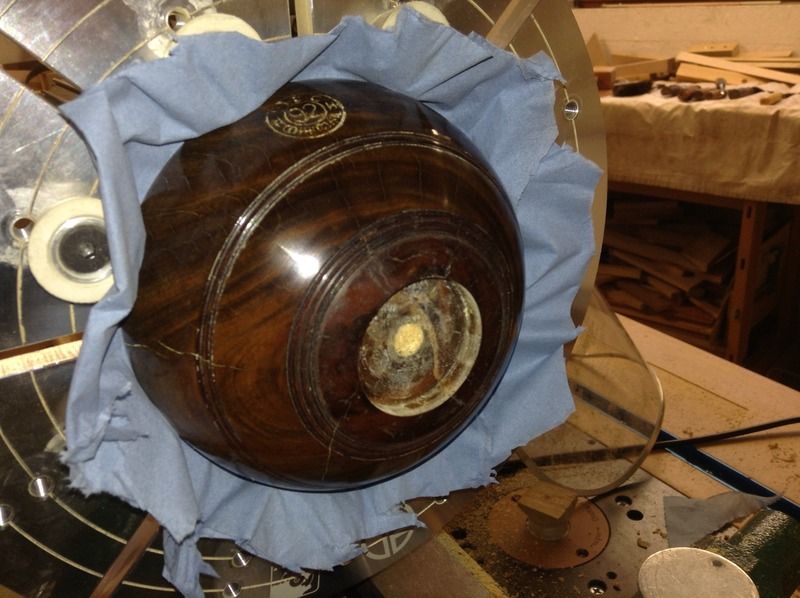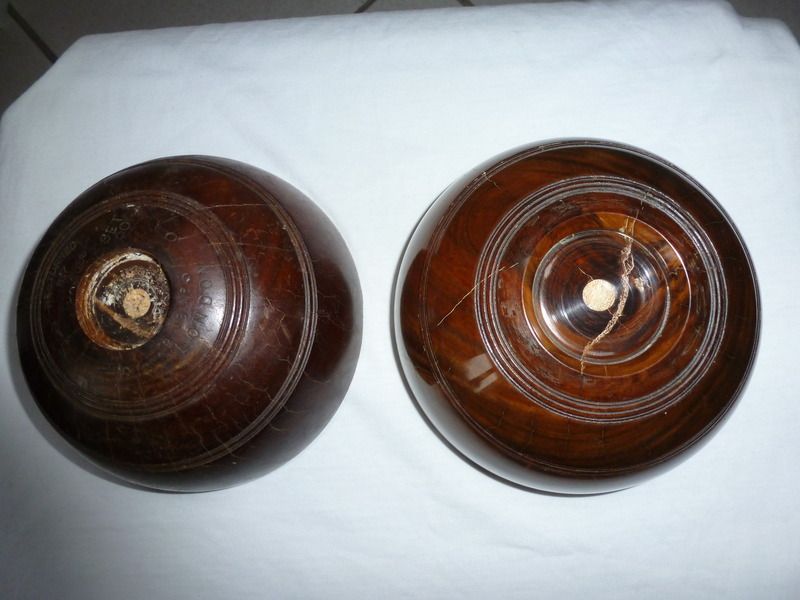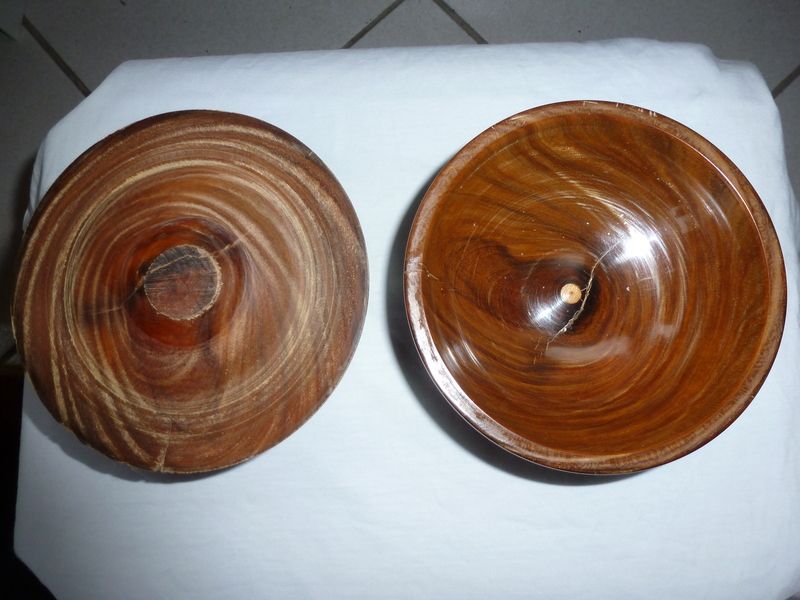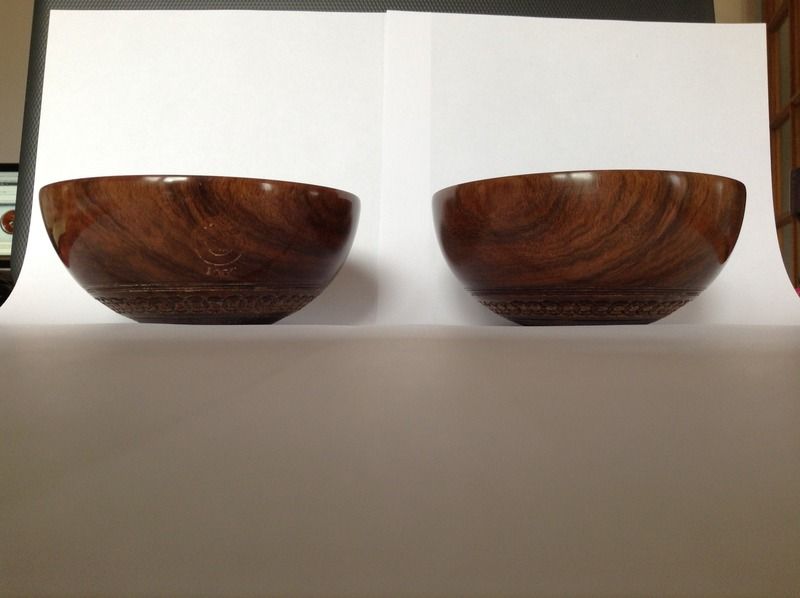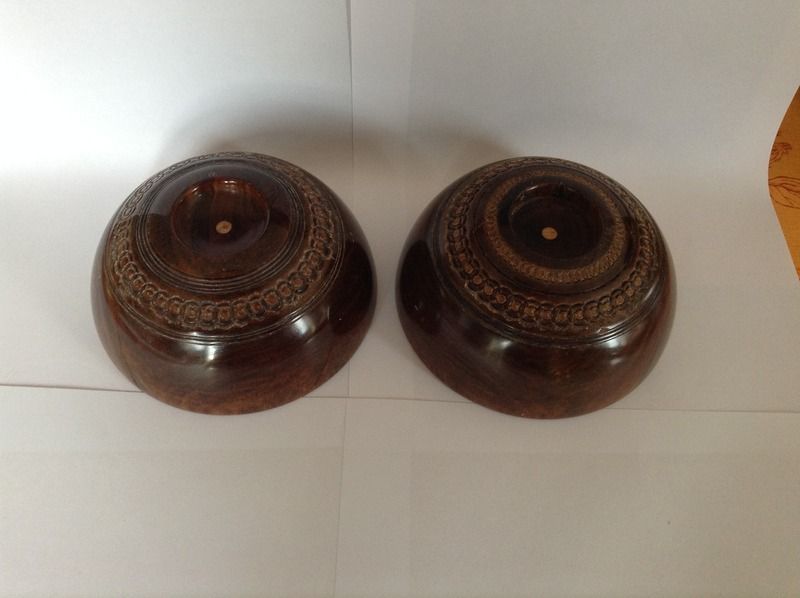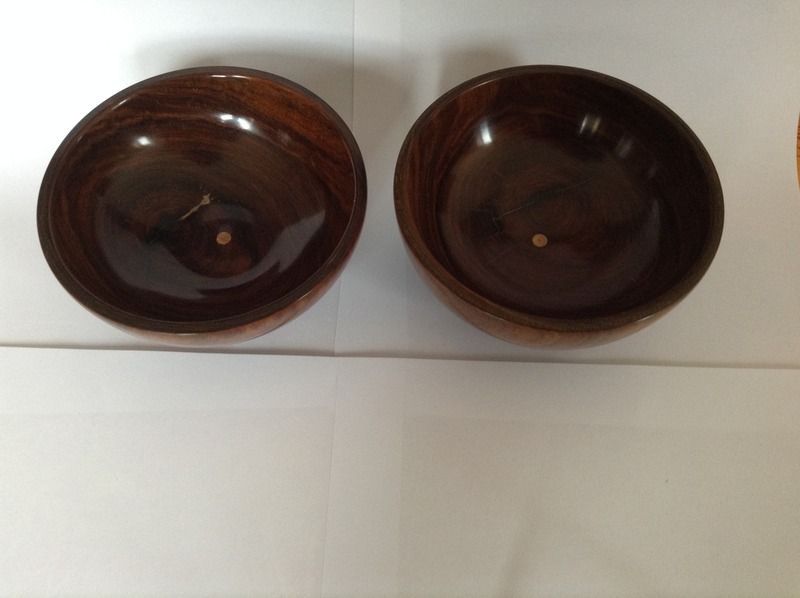Well I decided to throw caution to the wind and have a go.
Removing the plastic end caps was the first task. They appear to be made of some kind of acrylic which sent chards all over the workshop when hit with a mallet and chisel.
One side was quite a bit larger than the other which is too small at the moment to go in the expanding jaws of the chuck.
Once mounted on the lathe and at a very slow speed (360rpm) the slight bias of the bowl is evident in the video
The parting tool worked better than I expected, although the colour of the shavings threw me a bit. Yellow shavings from a dark brown wood.
The parting tool got me down down to about 3/4" of the centre. With only a slight fraying at the sides. I did widen the cut as I went deeper.
Finished the cut with the tenon saw.
2 halves
I read a number of articles that suggested that scraping lignum vitae was easier than using a gouge so a 1/2" scraper was used throughout. It goes without saying that lignum vitae is VERY hard and probably took about 1 to 1.5 hour to hollow out.
I wanted to keep the outside as original as possible and this particular wood had plenty of cracks and a markers mark.
I also wanted to keep the base as original as possible, so mounted on the button jaws I just cleaned up the recess a bit.
I need to improve the finish on the next one. Not sure if the marks here (the one on the right) are from streaks in the sanding sealer or from the tool. The one on the left has yet to be hollowed out.
The above was just a test run on one of the woods which had plenty of quite deep cracks with plenty of surface cracks. The "test" was worthwhile.
Here is a pair of bowls made from a different wood (that is wood in the bowling sense, it is still lignum vitae).
Note the carvings. These were impossible to clean up without losing the profiles so I left them alone. As the original manufacture of the woods seemed to require a 6mm hole being drilled though the centre of each wood a beech dowel was glued in place.
Finished with cellulose sanding sealer and carnuba wax
